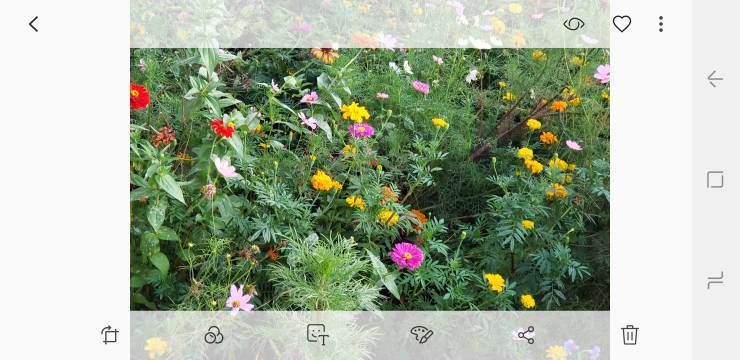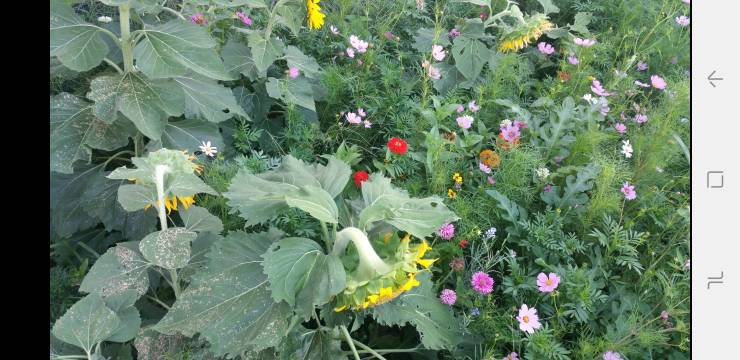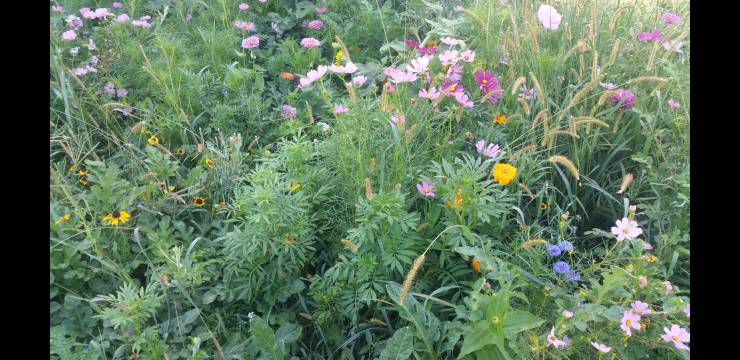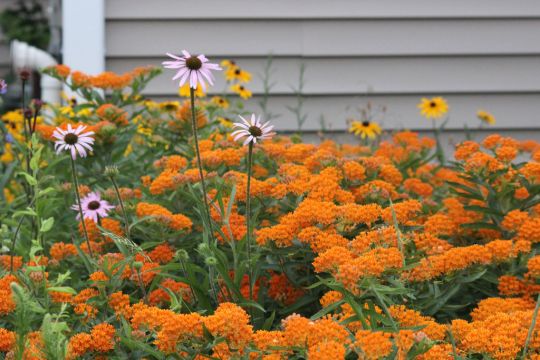CrazyEd
5 year old buck +
I am going to use this thread to share knowledge (and experiments) of growing native plants and wildflowers from seed throughout the 2019 season and beyond. I'll also cover how to further propagate established plants, harvest seed and clean seed.
Prairie's used to cover much of the landscape in some areas of our country, a sea of native grasses and flowers and with prescribed burns (fire) they thrived. Extremely diverse and complex ecosystems they were. Then man came along and decided to farm and homestead and that was the beginning of the end. Frankly many of these native plants just are not around anymore. They are of critical importance to insects, butterflies, birds and wildlife in general. They can also really benefit your soil, and many are very drought tolerant. I am lucky that a lot of our farm has never seen a plow, but at the same point much of it is overgrown with woody vegetation (trees). Thankfully due to a tornado 20 years ago and some oak wilt, some areas have opened up and there is evidence of these native plants that once dominated the landscape. We try to do our part to bring them back and help them reestablish where we can.
I enjoy growing a lot of these different plants and species in my backyard at home because of their beauty, but also they are low maintenance and I do want to do my part to help native pollinators such as bees and butterflies. The backyard also provides me with a great seed source because seed can be very expensive with some plants. With some species all it takes is a few plants to have hundreds or even thousands of seeds. I try to avoid plants that are extremely aggressive, but at the same time it's easy to take excess plants and seed to the farm and let them run wild.
If you want to learn more about this topic I encourage you to stick around and ask questions. As I get this thing going i'll try to post a lot of pictures of what I've done and what i'm doing. As well as useful resources that I've found. Stay tuned!
Prairie's used to cover much of the landscape in some areas of our country, a sea of native grasses and flowers and with prescribed burns (fire) they thrived. Extremely diverse and complex ecosystems they were. Then man came along and decided to farm and homestead and that was the beginning of the end. Frankly many of these native plants just are not around anymore. They are of critical importance to insects, butterflies, birds and wildlife in general. They can also really benefit your soil, and many are very drought tolerant. I am lucky that a lot of our farm has never seen a plow, but at the same point much of it is overgrown with woody vegetation (trees). Thankfully due to a tornado 20 years ago and some oak wilt, some areas have opened up and there is evidence of these native plants that once dominated the landscape. We try to do our part to bring them back and help them reestablish where we can.
I enjoy growing a lot of these different plants and species in my backyard at home because of their beauty, but also they are low maintenance and I do want to do my part to help native pollinators such as bees and butterflies. The backyard also provides me with a great seed source because seed can be very expensive with some plants. With some species all it takes is a few plants to have hundreds or even thousands of seeds. I try to avoid plants that are extremely aggressive, but at the same time it's easy to take excess plants and seed to the farm and let them run wild.
If you want to learn more about this topic I encourage you to stick around and ask questions. As I get this thing going i'll try to post a lot of pictures of what I've done and what i'm doing. As well as useful resources that I've found. Stay tuned!





